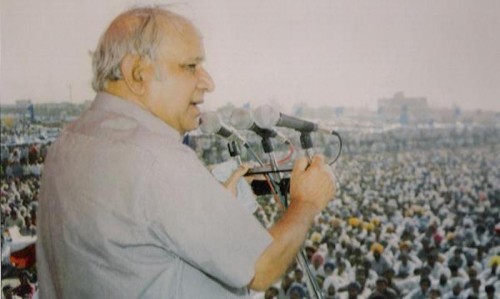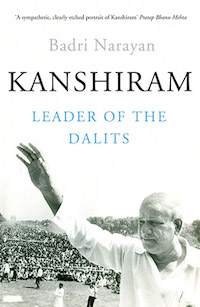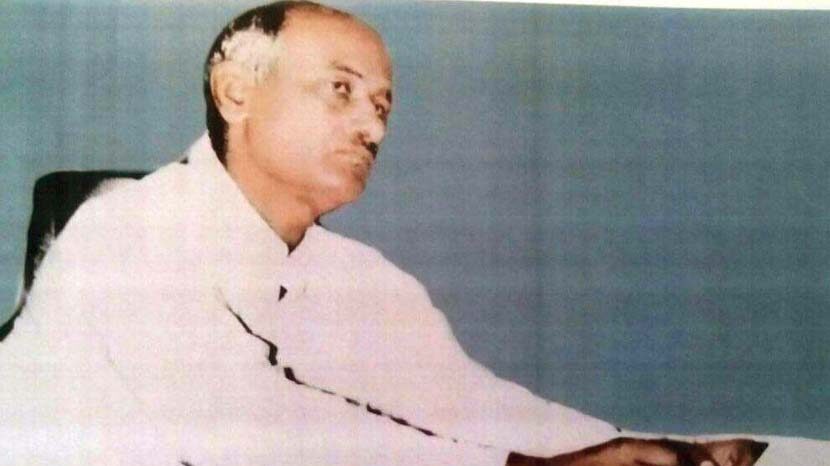 Not many political leaders of the 20th century have changed the landscape of Indian politics as much as Kanshi Ram, a true mass leader. Born in a Ramdasia Chamar family in rural Punjab, he fought throughout his life to politically empower the most deprived sections of society. Among his many achievements, “Manyawar”, as he was popularly called, succeeded in “installing” a Dalit woman as the chief minister of Uttar Pradesh – politically the most crucial state of the country and the citadel of Brahmanism. Much of his eventful life has been portrayed in a political biography authored by the noted social historian and cultural anthropologist Badri Narayan.
Not many political leaders of the 20th century have changed the landscape of Indian politics as much as Kanshi Ram, a true mass leader. Born in a Ramdasia Chamar family in rural Punjab, he fought throughout his life to politically empower the most deprived sections of society. Among his many achievements, “Manyawar”, as he was popularly called, succeeded in “installing” a Dalit woman as the chief minister of Uttar Pradesh – politically the most crucial state of the country and the citadel of Brahmanism. Much of his eventful life has been portrayed in a political biography authored by the noted social historian and cultural anthropologist Badri Narayan.
The biography Kanshiram: Leader of the Dalits, comprising eight chapters, dwells on his childhood, political journey from Maharashtra to Uttar Pradesh, as well as his political ideas. Moreover, the book also touches on the criticisms of Kanshi Ram and the Bahujan Samaj Party (BSP).
The author, who has spent decades in Uttar Pradesh both as a student and a scholar and “closely followed” Kanshi Ram’s “journey”, writes that all the Dalits with whom he interacted “acknowledged” that Kanshi Ram had inculcated a strong sense of confidence, indemnity, self-respect in them. The author himself calls Kanshi Ram a “democrat to the core”. Kanshi Ram, Badri Narayan goes on to say, was a “master strategist” who brought Dalits, Adivasis, Backwards and religious minorities under the social category of “Bahujan”, making them “realize the value of their votes” and, in 1984, floating the BSP, a party that represented freedom and respect and brought about social transformation.
The first chapter takes the reader through his childhood. Born on 15 March 1934, in a “relatively well-off” family, he had his early education in the Government Primary School, Milakpur, Punjab. Like most Dalit students, he faced discrimination at the hands of his teachers. For example, at the school, the Dalits had to drink water from a separate pot. Another incident that deeply affected him was when he discovered how a senior officer treated his father. This is how Kanshi Ram recalled the incident: “Once, when I was a school student, my mother asked me to go and deliver food to my father who was performing a menial job [begaar kar rahe the] at the Ropar Canal Guest House … I took the food and set off for the guest house. It was intensely hot and when I reached the guest house I saw that my father was drenched in sweat. I could not bear to see his condition, so I asked him to rest. But my father said that he could not do this as the senior officer was sleeping inside and he had to constantly tug at the rope of the hand-pulled fan to keep him cool … My father was doing that job in return for a small amount of money and explained that if he stopped pulling [the rope], the officer would wake up and punish him. I then told him to keep a small fan in his other hand to cool himself but my father said he would do no such thing [pp17-18].”
Overcoming such barriers of caste, he continued to do well in studies. In 1956 he completed his BSc from Government College, Ropar.
Foray into politics
The second chapter discusses his time in politics – from the RPI (the Republican Party of India), founded by Ambedkar towards the end of his life, BAMCEF (All India Backward and Minority Communities Employees Federation) to BSP. The author has divided the political life of Kanshi Ram into four periods. The first phase (1958-1964) begins when he finds a job in Poona and becomes associated with the RPI. He also worked with the People’s Education Society, established by Ambedkar. The second phase (1964-1978) begins when he quits his job in 1964 and joins the RPI, which he later criticizes for being faction-ridden and overshadowing its “original objective”. As he became disillusioned with the RPI, Kanshi Ram, in 1971, formed the SMCEA (SC/ST/OBC Minorities Communities Employees Association) in Poona, which was later renamed BAMCEF. The third phase (1978-1984) begins with the formation of BAMCEF, which was formally set up on 6 December 1978. The BAMCEF called upon its followers to “become educated, become consolidated, and struggle”. The fourth phase (1984 onwards) is no doubt the most important phase of his political life, during which the BSP emerges, epitomizing the political rise of Bahujans.
The third chapter is based on Kanshi Ram’s book The Chamcha Age: An Era of Stooges (1982), which he published on the 50th anniversary of the Poona Pact (1932). Gandhi had blackmailed Ambedkar into signing the pact and rejecting the separate electorate for “depressed classes” awarded by the British Government. In my view, the author has fallen short of critically engaging with The Chamcha Age. With this book, Kanshi Ram had hoped to awaken the masses about the “counterfeit” leaders, who, according to him, had been born into oppressed communities but had been serving the interests of the oppressors.
The fourth chapter talks about how Kanshi Ram used subaltern culture, history and myths as political resources to build self-respect among Dalits and Backwards. For example, in order to mobilize Bahujans, the BSP constructed and popularized icons such as Buddha, Kabir, Ravidas, Daria Sahib, Jagjivan Das, Jhalkaribai, Bijli Maharaj, Daldev Maharaj, Baaledeen, Veera Pasi and Mahamaya. While the author has presented a good analysis of the cultural politics of Kanshi Ram, a paragraph on Guru Ravidas is problematic: “In addition, the Mughal rulers were frantically converting the lower castes to Islam through various allurements and temptations in order to expand their numbers and consolidate their position in India. Sant Ravidas, through his preaching, tried to reform Hindu society so that the lower castes were not tempted to convert to Islam and the Varna system was maintained [p121].” Unlike the myths and propagandas of the Hindu right that the medieval period saw forceful conversions of Hindus to Islam, many secular historians largely support the view that the egalitarian nature of Islam brought relief to the lower castes who were suppressed by the brahmanical social order.

The fifth chapter is about the BSP, its bidding for power and the role of Kanshi Ram. The author rightly acknowledges Kanshi Ram’s ability to “sway and mobilize large crowds”. Kanshi Ram had realized that in a democracy if the oppressed majority were made conscious of their votes, the master key or guru killi, a term he coined for power, could be seized. His managed to explain the concept of democracy in such a simple, yet profound, way: “Lokshahi mein rani aur mehtarani ki keemat ek hi hoti hai.” [In a democracy the worth of a queen is the same as that of a maid. (p165)] In contrast to the armed struggles pursued by a section of communists, he mobilized the Bahujan through Constitutional means and democratic processes.
The sixth chapter, seventh and eighth chapters discuss the criticisms and limitations of Kanshi Ram and his party. For instance, it was alleged that he indulged in “opportunism as a strategy”. He welcomed “defectors” such Arif Mohammad Khan and Akbar Ahmed “Dumpy”, while it forged alliances with the BJP, which it had earlier opposed: “Kanshiram faced the greatest flak in his political career over the BSP coming to power twice in UP with the support of the BJP [p181].”
The critics, however, should not forget the constraints under which the BSP had to mobilize the most deprived sections of society to fight the oppressive social system. Apart from giving voice to the voiceless and instilling self-respect and confidence in them, Mayawati’s rule in UP has brought about some concrete changes. Well-known political scientist and sociologist Christophe Jaffrelot (“The BSP in Uttar Pradesh: Whose Party is It?” in S.M. Michael, ed, Dalits in Modern India: Vision and Values, 2007, p262) noted that the Mayawati’s Ambedkar Village Scheme set aside funds for the socio-economic development of the 25,434 villages where at least half of the residents belonged to the SCs.
Badri Narayan has not done justice to Kanshi Ram’s contributions by referring to him merely as the “Leader of Dalits” in the title. It is paradoxical that while the author appreciates his role in mobilizing masses and transforming society, he, nevertheless, pushes him to the margins and pins the label of Dalit on him. As far I know no published biography of Jawaharlal Nehru has the title or subtitle, “Leader of Brahmins”. This may be seen as a continuation of the hegemonic discourse in mainstream social sciences that often reduces the likes of Phule, Periyar, Ambedkar and Iqbal to leaders representing the interests of a certain section of society while it eulogizes leaders such as Gandhi and Nehru as those who fought for the nation.





